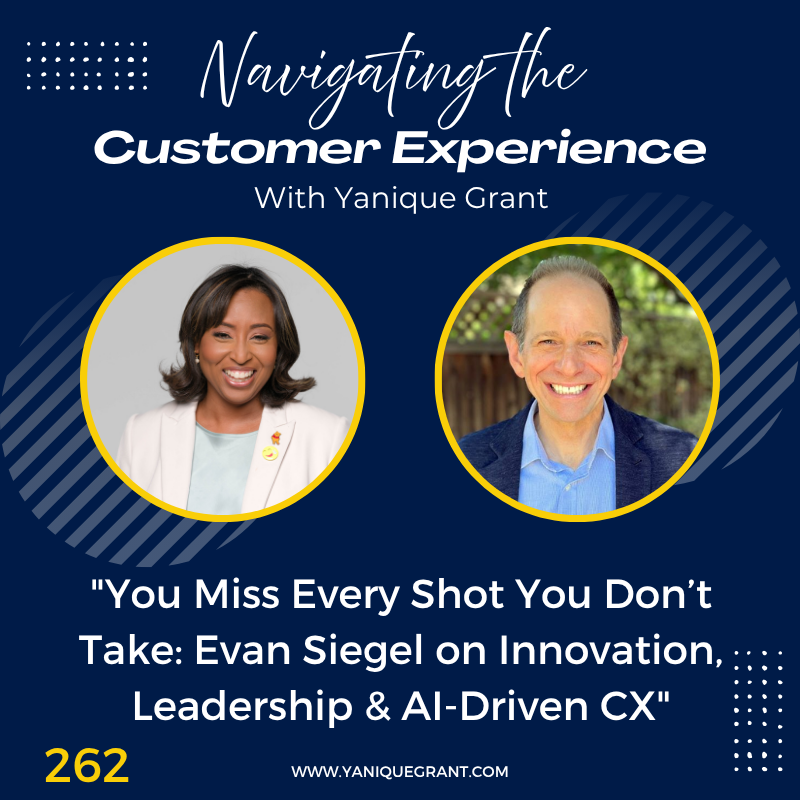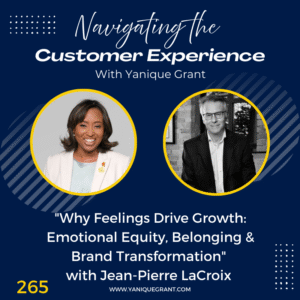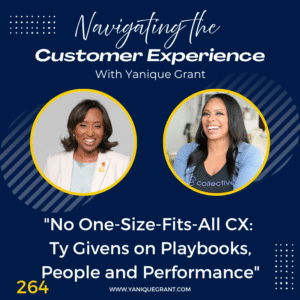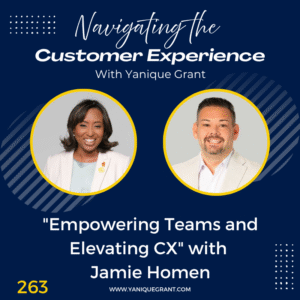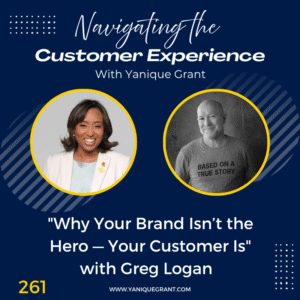Evan Siegel is a eGain’s VP of AI, where he is developing the next generation of AI powered conversational guidance. Prior to eGain, Evan held various customer experience and contact center leadership roles over 16 years at Wells Fargo, where he also established a financial health coaching team that was featured in the bank’s annual report, brand advertising campaign and ABC’s Good Morning America. Evan is an active writer and speaker, with pieces published to The Financial Brand, BAI Banking strategies and an appearance on Bain & Company’s Net Promoter Score Podcast. Earlier in his career, Evan spent 10 years as a strategy consultant at EY, CSC Index and Cap Gemini.
Questions
- Can you briefly share your journey and how you got to where you are today?
- Can you tell us more about eGain, what it does, and share a couple of examples of how it has added value to your clients’ businesses?
- How does eGain gather and build its knowledge base for each company, and how do you address the human element—like empathy and emotional connection—that can’t easily be taught through a knowledge base?
- Now, Evan, can you also share with us what’s the one online resource, tool, website or application that you absolutely cannot live without in your business.
- Can you also share with us maybe one or two books that you’ve read, it could be a book that you read a very long time ago, or even one that you read recently, but it has had a great impact on you.
- Now, can you also share with us, Evan, what’s the one thing that’s going on in your life right now that you’re really excited about, either something you’re working on to develop yourself or your people?
- Where can listeners find you online?
- Now, before we wrap our episodes up, we also would like to ask our guests, do you have a quote or saying that during times of adversity or challenge, you’ll tend to revert to this quote if for any reason you get derailed or you get off track, the quote kind of helps to get you back on track. Do you have one of those?
Highlights
Evan’s Journey
Me: Now, Evan, we always like to give our guests an opportunity to share in their own words, a little bit about their journey. So, as briefly as possible, just kind of give our audience a little bit about your journey, how it is that you got from where you were to where you are today?
Evan shared that it’s been an interesting journey and unconventional. So, just for a bit of context, he grew up in a family that owned a small business, grandparent started it, father and uncle ran it, was a garden center retail business. Coming out of college, he kind of wanted to replicate that entrepreneurial experience, so it wasn’t in the intro, but he actually started a painting company, a residential house painting company in Fairfield County, Connecticut, because there are big homes there. And he tried to do what is very popular now among MBAs, he and his business partner I tried to bring marketing and business sophisticated to a traditionally unsophisticated business, the house painting business. They were quite successful, they grew to have 300 employees, 70 job sites at any one time. It was an inc. 500 company back in the day. This is quite a while ago, but it was hard some of the listeners might be able to appreciate at that scale, when you’re the owner of a business and the product is something that the people watch being manufactured, like you watch your house being painted. It’s the most valuable asset.
He found himself almost always dealing with angry customers, and that was kind of burning him out. So, although the business was successful, he sold it and actually went to Stanford to get his MBA. Great experience, got him out to the West Coast, out of there. You talked about my consulting experience, but where his experience at Wells Fargo really sort of got him deep at customer experience.
He did two things there, one and at Wells Fargo is a mega bank, everything is mega sized, so he ran a customer experience strategy team. Wells Fargo, across the mortgage and retail bank at the time had approximately 70 million customers, and so they, he and his team were figuring out, what are the pain points those customers are experiencing? And they did it kind of old school.
They read feedback and letters, and they categorized all the issues, and they picked issues to go fix, such as one of the issues they fixed was, if you had multiple accounts, let’s say a mortgage account, a home equity account and a checking account, and you changed your address, people thought they could just tell one part of Wells Fargo and all would know, that wasn’t the case and it caused all kinds of extreme customer pain. So, they fixed that.
Then he went to the contact center where, again, everything’s mega size, 10,000 agents. His job was special projects, things like improving first contact resolution, which is, answering the issue at the first take. He had three tools in his toolkit, coaching, because in contact centers, one on one coaching is the best way to drive change. Two is pizza parties, sounds silly, but everyone knows contact centers run on pizza parties. And the third thing is training, unfortunately, and maybe some of your listeners can relate to this. Those are kind of weak tools. People sort of forget the buzz there.
So, as he was looking sort of, what could he do to really structurally drive better change? He found the space of knowledge management which helps frontline customer facing personnel find the right answer at the right time, in the right channel, which is what his current company, eGain does.
He said, this is a much better way. This is structural, it’s elegant, it uses technology. So, he retired from Wells, he’s aging myself a little bit, and he joined eGain to do a bunch of stuff, but it’s proved out because he’ll just give you a magnitude of scale of the results that you get with technology versus not.
At Wells Fargo, he was getting one or two percentage point improvement in first contact resolution, and they would celebrate that. Here with sort of AI powered knowledge management and conversational guidance, they have a client, it’s a UK cell phone provider, same scale as Wells Fargo, 10,000 agents.
They have gotten a 37% percent improvement in first contact resolution. They’ve improved their net promoter score, something he’s sure listeners know about, by 30 points. These are unimaginable results. So, it just shows you how technology is the more elegant solution. And his joke is, if he had gotten those results at Wells Fargo, he undoubtedly would be CEO now.
Overview of eGain and Its Impact on Clients Businesses
Me: So, Evan, tell us a little bit about eGain. You kind of mentioned it a bit in your overview just now, but just kind of give us a wider scale of what eGain does and why you created this business. And I know you gave us an example of a business that you worked with in the UK, but maybe if you gave us two examples of how you’ve been able to add value to your clients’ businesses through this organization that you’re now a part of.
Evan shared that eGain, the sort of the simple way to wrap your head around it is they provide the right answer, to the right person, at the right time, in the right channel, it’s a trusted answer.
And by the way, this type of a solution is even more important in the age of AI, because people think, “Oh, I can just Bolt AI onto my policies and procedures, and I’ll get an instant right answer.” But you know, in most organizations, or policies and procedures and write ups corporate know how, there are gaps in consistencies and outdated information and AI, it’s a classic garbage in garbage out problem.
So, they at the sort of knowledge level, the policy and procedure level, they make sure it’s clean, up to date, pristine, in good shape. Then they also have best of breed search capabilities so you can find exactly what you’re looking for. And then at the top layer, at the conversation layer, they really have also best of breed AI type capabilities that will reason, will give answers to people based on the knowledge base that’s in there.
And so the bottom line is, they’re an AI CX automation platform, customer experience platform, and that’s how they’re able to give those types of incredible results, the right answer, right person, at the right time, trusted answers.
And so, another good example is, he can name this example is the Veterans Administration. They use they eGain across the entire organization, both customer facing, the veterans and internal facing to answer questions, and it’s a complex use case, because it’s actually the largest healthcare provider in the US.
So, any question about coverage, resolving an issue, eGain is a single stop to resolve that issue, and it’s become ever more important in the age of sort of government shrinking. And so, that sort of simple answer to complex questions, issue resolution is incredibly valuable, and it allows you to give that first contact resolution result experience. It allows you to automate, increase self-service for your company. They actually are proud to say that they’re helping their clients reduce their overall cost of customer service upwards of 50% through that mix of you can send more calls to bots for self-service automation, you can help your team members who do answer questions, whether they be in a branch, in a field, in a home office or in a contact center, answer the question, diagnose the issue more quickly on the first time.
And then when you bring on new employees, you don’t need to train them as much. Typical big companies training might be 9 to 12 weeks for people that are customer facing, you can shorten that, you don’t need to explain to them how to do their job, the knowledge base, the conversational guidance that AI provides will tell a customer facing team member how to diagnose and resolve an issue just in time so you can shorten your training time by 50%, many of their clients are shortening their training time by 50% and even salt in things like those humanistic parts that are, as you know, really important to CX, how to build a relationship with your customer, how to de-escalate a difficult situation. So, these are all the things that they enable their clients to do to deliver that breakthrough customer experience and cost reduction result.
eGain Building its Knowledge Base for Each Company and Balancing the Human Element in AI
Me: So, I have two questions coming out of what you just explained AI does. The first one is you’ve explained that you’re like a knowledge base. So, how do you gather the data that you’re dumping into this knowledge base for each company, that they have this central repository that they can get this access to this information? That’s one.
And then you kind of touched on it just now when you said the humanistic part, because whereas, as you said, you can cut training time down by 50% and I get that, that’s brilliant. There’s also the human component, as you mentioned, and unfortunately, I just don’t believe that can be taught through a knowledge base. I still think you need some level of engagement, because there’s emotion, there’s empathy, and yes, you can probably explain it through a video or a one paragraph or however it is you depict it to them. But I do believe that people sometimes not just learn by reading or watching what they learn by doing. So how do you close those gaps for those types?
Evan stated let’s start with the second question first, they’re great questions. So, what he would say is, they free up mind space of your customer facing person to do all that. Because instead of worrying, let’s take a bank example. Someone calls in and they say, “Oh, I’m a military person. I’m temporarily getting reassigned to Germany. I need my mail sent to this special thing.” This is a corner case. This is a rare customer issue resolution. So, if an agent doesn’t have the best knowledge and conversational guidance tools, they’re spending all their mental time and how the heck do I solve this question? So, they through some AI, allow the how to ask the next best question. What’s the questions I need to ask to diagnose that and then tap into the policies, procedures and guidance and walk that agent through step by step. Say this, do this, exactly what they need to resolve that issue.
So, because they don’t need to now worry about that, they can think about all this training they’ve gotten, “How’s the weather there? Oh, I see you’re in the military. My uncle was in the military.” They can spend the time on that, to build that humanistic, to build a rapport. So, he agrees with you, but the silver bullet here is they create the mind space and the relaxation to tackle that.
So, your first question was, how do we build the knowledge base? Well, every company, big or small that they work with has an existing set of knowledge. Typically it’s in something like SharePoint, it might be in Word, it might be in PDFs. What they do is they analyze, or this is their new approach they take. The simple rule in customer issue resolution, 80/20 rule generally applies 20% of your policies and procedures will resolve 80% of your issues.
So, they will analyze through AI what are the questions that your customers are asking, whether it’s through email, through phone calls, they’ll get the scripts of those, the text of those phone calls. They’ll run it through their AI model, and they’ll get detailed breakouts of what are the top issues, what are the sub issues? What issues go together?
And then they use the AI capabilities within their software to write new knowledge, they’ll use the existing that you have in your SharePoint, but they’ll rewrite it using AI because they have best practices.
What grade level does it need to be written at, generally a lower grade level so everyone can understand it.
Where does a subheading need to be?
How do you make it short and concise?
Where do you put a table where it needs to be?
And so, that they take existing, they rewrite it to align with best practices, and they house it in their system, and then it makes it easy to consume. He’s simplifying things for the listeners, but that’s the basic gist of what they do. They analyze what you have, they analyze the questions you ask, and they use AI to rewrite it to align with best practices, and they do this by the way, in a matter of days and weeks. It’s a very fast implementation process.
App, Website or Tool that Evan Absolutely Can’t Live Without in His Business
When asked about online resource that he cannot live without, Evan shared that as he alluded to with his retirement reference, he’s in the later years of his career, and this example shows you can teach an old dog new tricks.
So, his new online can’t live without resource is AI, ChatGPT, Claude, Perplexity, and he really use it as his personal assistant. He’s going into a meeting with his CEO, they’re going to talk strategy, he’ll ask the AI, it’s all about the prompt, and he’s learned recently here how to write really good prompts.
What are some strategic imperatives and questions that a SaaS company needs to think about. He’s writing a communication to a hot prospect at a company, he’ll put in his points that he wanted to have, and he’ll have the Claude write a really good draft of it, then he’ll edit. He’s going to make a post on LinkedIn, again, first draft is from AI, so it’s really his personal assistant, he always adjusts. He uses it to brainstorm, to draft, and it’s made him much more efficient. There’s a saying here in Silicon Valley, it might be a little dated now, but he still believes it, “AI is not going to replace me, but someone who knows how to use AI better than me will replace me.” And so, that’s sort of his mantra. He wants to be on the leading edge of adopting this tool because it makes him much more efficient and effective.
Books that Have Had a Great Impact on Evan
When asked about books that have had a great impact, Evan shared that he’s going give two. So, one he read in his 20s, it almost gives him cliche, but it’s such a great book he read, How to Win Friends and Influence People. He studied business at Stanford, read all 1000s of business books, but what he learned out of that book is how to be an engaging conversationalist, how to ask and sincerely care about what other people are doing. He doesn’t like to tell his own stories, he likes to learn from other people. And it’s stunning how few people ask probing, insightful questions in a regular conversation. And that’s helped him in business through the sales roles he’s done, etc.
A current book he’s reading, and he reads these big historical Tomes. It’s a three part, he’s in the final bit. Three-part, history of Winston Churchill, written by William Manchester, and what he’s learned from this, hero of his saved the Western world from the tyranny of Nazism.
In the 30s, he was running around Europe saying, Hitler is bad, this is terrible. No one believed him, believe it or not, he was a lone voice, yet he was a man of convictions. He stood to his point, and that’s what positioned him to be the leader during the wartime. People knew that this guy was pure, and it was a man of his convictions. You see how communication played in his leadership of the Western alliance through all his great speeches, and how he thought about that.
And the third thing is, you see how he really thought about strategy and running the war. And remember, he (Evan) spent time as a strategy consultant. He works for a $100 million company, so he’s involved with their CEO and setting the strategy of their company, and he really see the importance of strategy in any business, in determining where are you going to place big bets, what are you going to do to grow your business, etc. So, a history book for business lessons.
What Evan is Really Excited About Now!
When asked about something he’s excited about, Evan shared that he has sort of a mantra that, “I don’t need to be the smartest person in a room, but I need to make the best decision coming out of the room.” And so, this is something he’s working on basically for his whole career. But he believes that when he faces a difficult problem, when he’s trying to chart a growth opportunity, he gets folks from across his team together. They have a whiteboard, they brainstorm, they hash it out, and then it’s a sort of a collaborative approach. And out of that comes a great decision, and as he sort of in the final lap of his career here, he’s realized ego can be one of the most damaging things in business, and when you can check your ego, ask good questions of your team, listen generously, you come up with a way better answer than you alone, sitting in a quiet room can generate.
Where can listeners find Evan online?
LinkedIn – Evan Siegel
Email – esiegel@egain.com
Evan shared that they just launched a new product. It’s designed for smaller businesses, no contract, pennies per issue resolution. It’s an AI agent for self-service, very sophisticated, has reasoning capabilities. If any of the listeners wrote to him, they would give them the white glove treatment to help set them up, make sure their implementation of this is powerful. By the way, they also include a free trial period. So, he would love for have the listeners write to him, ask their questions or ask for a white glove treatment of this new AI agent for self-service that’s very cool.
Quote or Saying that During Times of Adversity Evan Uses
When asked about a quote he tends to revert to, Evan shared that he has two. One he already shared, which is, “I don’t need the smartest person in the room. I need to make the best decision.” That’s one.
The other one, which he also coaches his kids with is, “You miss every shot you don’t take.”
And in a fast-paced technology company, he came from a big bank, and then he moved to a fast-paced technology company, and the difference is here at a fast-paced technology company in the heart of Silicon Valley, they’re constantly trying new things. They’ll spend a day thinking about it and they’ll just try it because they want to learn.
They want to take their shot, and they fail fast, and then they regroup, and they learn from that experience. And he contrast that with working at a mega bank they’re super slow, you have to get 10,000 stakeholders to sign off on anything, you write papers, you document everything, and then you place your bet, and it still often fails, but the pace of change is so slow, so he loves when he’s in adversity is just try new things, let’s sort of experiment their way out of trouble, because you miss every shot you don’t take.
Me: Agreed. I love that. Awesome.
Well, thank you so much Evan for taking time out of your very busy schedule to hop on our podcast sharing all of these great insights about your experience at Wells Fargo, as well as at eGain now, and all of the wonderful different exercises and experiments that you’re taking and just how it is that you can use technology to really enhance the customer experience through the knowledge base, as well as helping to create better issue resolution so things can be resolved quickly. I mean, at the end of the day, customers reach out to you because they have an issue, it could be to make a request, or it could be to resolve something that’s existing, and they want it done now. So, the faster that happens is the greater you’re able to gain their loyalty and trust and have them remain a long-standing client of your business. I’m sure you’re making that a reality for many customers and your clients in their businesses. So, thank you so very much.
Please connect with us on X @navigatingcx and also join our Private Facebook Community – Navigating the Customer Experience.
Links
The ABC’s of a Fantastic Customer Experience
Grab the Freebie on Our Website – TOP 10 Online Business Resources for Small Business Owners
Do you want to pivot your online customer experience and build loyalty – get a copy of “The ABC’s of a Fantastic Customer Experience.”
The ABC’s of a Fantastic Customer Experience provides 26 easy to follow steps and techniques that helps your business to achieve success and build brand loyalty.
This Guide to Limitless, Happy and Loyal Customers will help you to strengthen your service delivery, enhance your knowledge and appreciation of the customer experience and provide tips and practical strategies that you can start implementing immediately!
This book will develop your customer service skills and sharpen your attention to detail when serving others.
Master your customer experience and develop those knock your socks off techniques that will lead to lifetime customers. Your customers will only want to work with your business, and it will be your brand differentiator. It will lead to recruiters to seek you out by providing practical examples on how to deliver a winning customer service experience!

